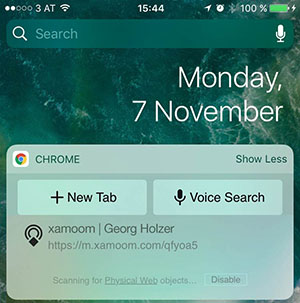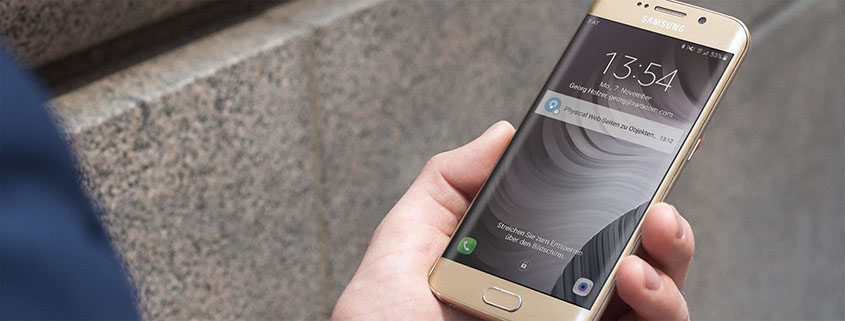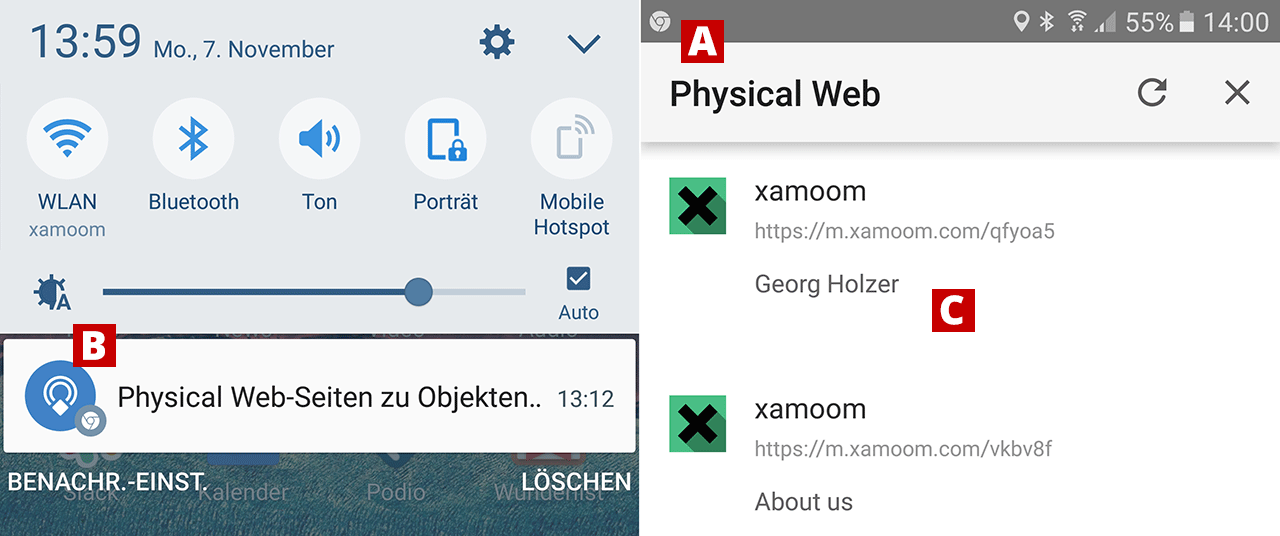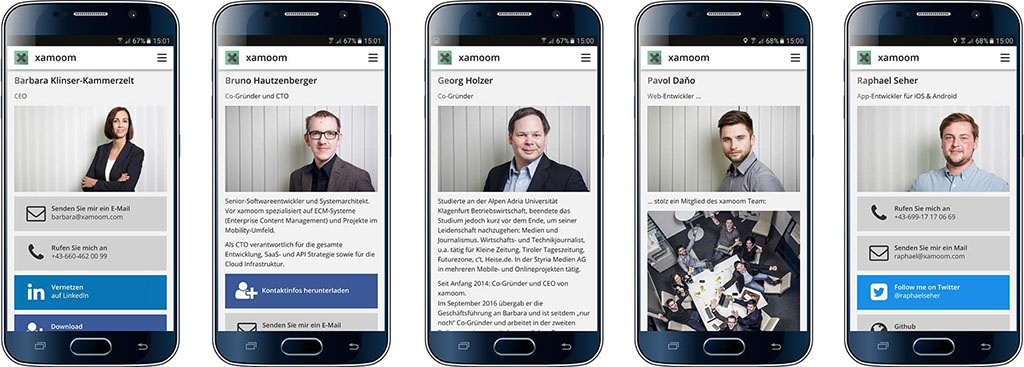Update: As of November 2017, Google ended support for Eddystones on iOS. The “Physical Web” now only works on Android.
Update 2: On December 6th, 2018, Google will send the last Eddystone/Nearby Notification to an Android device. The Physical Web is dead. More in this blog post.
iBeacons, small Bluetooth transmitters for location services, are amazing. If you get close to such a “beacon”, the app you’re looking for will show up the right content, a specific location bound feature, or show an appropriate notification. The battery of an iBeacon lasts for several years, the devices are quite cheap (from about 10 Dollars up) and the roll-out is very easy if you are using our xamoom service app. In our blog, there is a detailed iBeacon 101.

Beacons for the mobile web
Google knows this and introduced its Eddystones over a year ago. The requirements for using them are Android 4.3 or higher with a current Chrome browser or iOS 7 or higher – also with Google’s browser installed. The mobile Opera will do the trick also.
Here’s an intro video from July 2015:
Sounds exciting, right? But Google’s physical web isn’t really “ready for prime time” yet. This might be the reason why there is hardly anybody interested in it. There is not even a German translation of the Wikipedia page.
Recently Google has made some significant improvements and shipped it with the latest version of their Play Services to all Android handsets. Notifications are now somewhat more noticeable. It’s getting there, slowly.
Peculiarities
Google’s specifications are strict. The online company controls quite detailed what a physical web URL should look like. There may be a maximum of 17 characters (Why? No one knows.), the content must be encrypted by SSL (which is actually useful) and Google’s search engine bots cannot be held back by a robots.txt file from indexing the content (which leads to others problems).
Update: We can now work even with very long domain names.
As a service provider, which also wants to support Eddystones, you encode an URL on the beacon using the app of the beacon manufacturer instead of three iBeacon-IDs (UUID, Major, Minor). Some beacons (e.g., those of Radius Networks or kontakt.io) can send both information at the same time, which is why one device is sufficient for both standards.
Silent notifications
The advantage that no app is necessary comes with a price: notifications are really silent and not obvious at all. How does the user know that good content is waiting for him at a certain place?
The first time you have Bluetooth on and an Eddystone is nearby, you get a beeping notification. It asks you if you want to have this function activated.
Later, only a Chrome icon [A] will show up in the notification bar indicating that special content is waiting for you. Clicking on it [B] you get a list of all mobile content offerings in your vicinity [C]. A tap on them finally opens the browser with the content.

Very unobtrusive? Too little visibility? Right.
However, you must see Google’s dilemma: If everyone would distribute Eddystones in the wild and if they would trigger your cell phone to ring every time, you would throw your mobile phone very quickly into the next trash can.
By the way: The best possible range is (theoretically) about 40 meters in clear view.
Advantages and Disadvantages
The GOOD:
- For users, it is a small “Wow”. Without doing anything (holding your NFC phone somewhere or scanning a QR code) one can tell you something about a place or an object.
- Newer beacons can be Eddystones and iBeacons at the same time – without additional costs.
- Android has already everything necessary on board.
THE BAD:
- The Chrome browser must be installed on iOS devices and Chrome must also be allowed to send notifications.
- The user must first activate the option.
- The settings (also for disabling) are very hidden within Chrome: Settings – Privacy Settings – Physical Web.
- Google is too restrictive and wants all content to be indexed. This can be a show stopper for the one or the other use case – for example, if a museum does not want to have its audio guide publicly available.
Eddystones at xamoom
We support all techniques to determine the user’s context (location or proximity to an object). These are, on the one hand, URL-based identifiers like QR, NFC, and Eddystones. On the other hand, they are GPS coordinates or alphanumeric IDs for iBeacons. Other technologies can be integrated very quickly.
Our CMS backend generates these IDs (we call them “markers”), the service app (see screenshots below) helps to write NFC tags and Bluetooth beacons.
 Sample applications
Sample applications
Our business cards have always had a QR code and NFC chip that leads to a page about us. There, you can see a mobile website with all the multimedia possibilities offered by the web. You can call us with a tap, send us an email or download the business card file (.vcf) into the address book of your mobile phone.
In addition to QR and NFC, we could of course also carry an Eddystone (or an iBeacon) with us. And from now on we will do this by the way.
Another advantage with xamoom: The displayed page at a spot (location or object) can be switched at any time. For example, if an employee leaves the company, his digital business cards can easily be redirected to the new employee.
A Google employee has recently produced a nice demo video, in which a dog carries an Eddystone. In case the animal gets lost it can reveal information about itself.
The same could be done with every other object. How about an Eddystone in the Golf GTI when you join the Wörthersee Tour 2017? Or a piece of information to everybody who comes close to a stolen car? The content of an Eddystone page can also be changed live at any time using the xamoom location CMS.
Do you have other ideas? There is plenty of space down in the comments!
Test xamoom for free!
The use of Eddystones requires API access – to the most affordable package costs 399 Euros per month. However, the location-CMS can be tested free of charge before use. How? Just fill out the form in the xamoom store!
Artikelbild © ZedProMedia


